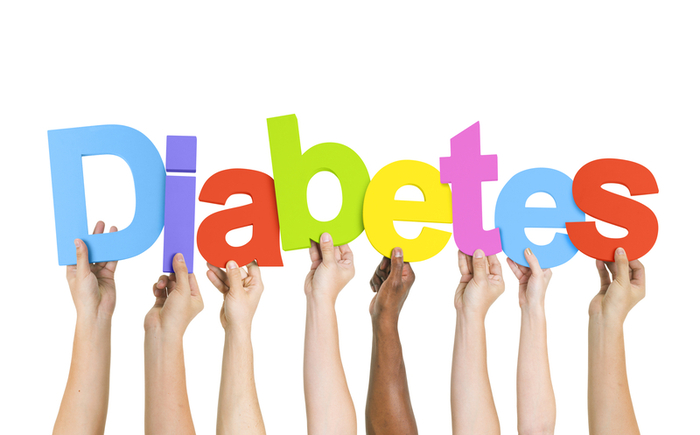- Calls to this hotline are currently being directed to Within Health or Eating Disorder Solutions
- Representatives are standing by 24/7 to help answer your questions
- All calls are confidential and HIPAA compliant
- There is no obligation or cost to call
- Eating Disorder Hope does not receive any commissions or fees dependent upon which provider you select
- Additional treatment providers are located on our directory or samhsa.gov
Can Anorexia Cause Diabetes?

Anorexia is a mental health condition that can have a significant medical impact. Anorexia can lead to several physical conditions.
What is Anorexia?
Anorexia is an eating disorder characterized by an intense fear of gaining weight or becoming fat. In order to avoid this, people with anorexia severely limit how much food they eat.
While some people with anorexia may only restrict their food intake, others may restrict and also engage in compensatory behaviors in order to lose weight. Some examples of compensatory behaviors include using laxatives, abusive exercise, or purging.
Over time, these behaviors lead someone to become malnourished. Without the proper amount of nutrients, someone’s body will struggle to function optimally. This can wreak havoc medically and lead to certain medical conditions.
Another key feature of anorexia is that despite the negative consequences, someone with this eating disorder may remain unaware that they are struggling. They may see themselves as being in a bigger body than what they really are, which can drive them to continue to restrict despite already being malnourished.
To make matters more complicated, in the beginning phases of anorexia, someone’s body may not show signs or symptoms that it is struggling. This can fool someone into thinking they’re fine when they aren’t.
This can be especially tricky and confusing for loved ones and medical providers who don’t know how to screen for anorexia. This can lead someone to develop more severe medical conditions that remain undetected until the symptoms become more severe or out of control.
Anorexia and Diabetes
While certain eating disorders can increase the risk for developing type two diabetes, anorexia is not shown to increase this risk. [1,2] However, people with type 1 diabetes are twice as likely to develop an eating disorder compared to people who don’t have diabetes. [1]
People with co-occurring diabetes and disordered eating sometimes hide their eating disorder behind their diabetes. For example, they may restrict certain food groups and say it’s due to having diabetes when it’s actually a manifestation of their eating disorder. [3] People with diabetes may also misuse their insulin as a way to lose weight. This is known as “diabulimia.”
Call Eating Disorder Solutions for Help 855-783-2519
These behaviors can have negative health consequences. [3] Signs of disordered eating in people with diabetes are: [3]
- Unexplained increase in A1C levels
- Repeated episodes of diabetic ketoacidosis
- Excessive exercise and ongoing hypoglycemia
There are other warning signs of anorexia that aren’t related to whether someone has diabetes. These are: [4]
- Missing meals or eating very little amounts
- Taking medication to reduce hunger
- Feeling overwhelmed or fearful about gaining weight
- Strict food rituals, such cutting food into small pieces or needing to eat foods in a certain order
- Bloating, constipation, or abdominal pain
- Headaches
- Problems sleeping
- Feeling cold, dizzy, or tired
- Poor circulation in hands or feet
- Dry skin
- Fine hair on the body, this is known as lanugo
- Reduced sex drive
Can you Recover From the Physical Effects of Anorexia?
Anorexia can cause a wide range of physical side effects. Some physical side effects of anorexia, such as bone loss or osteoporosis, may not be reversible. [5] However, if you recover from anorexia and become properly nourished, many health symptoms can get better.
It’s important to get treatment if you or your loved one is dealing with anorexia. Treatment can increase the chances for recovery. There are different treatment options depending on your unique needs. Treatment options include:
- Inpatient: Inpatient treatment takes place in a hospital. Inpatient treatment typically lasts for a short amount of time. The goal of inpatient treatment is to make sure someone is physically safe. Once someone becomes medically stable, they will likely be referred to a residential treatment program.
- Residential: Residential treatment is 24/7 care. Residential treatment may last a few weeks up to a few months. If you attend residential, you will live at the center.
- Partial Hospitalization Programs: is typically required when a person is medically stable but still requires the structure to continue treatment. PHP can last anywhere from 3-12 hours per day, up to 7 days a week, depending on the person’s needs.
- Intensive Outpatient Programs: Intensive outpatient programs provide less care than residential treatment. These programs typically last several hours per day, several days per week.
- Outpatient: Outpatient treatment is the least intensive amount of care. Examples of outpatient treatment include seeing a therapist weekly or a psychiatrist on a monthly basis.
Treatment tends to include multiple different professionals who make up a treatment team. This is considered best practice. [3] An eating disorder treatment team often has the following providers:
- Doctor
- Mental health clinician
- Registered dietitian
- Psychiatrist
While anorexia isn’t shown to increase the odds that you or your loved one will develop diabetes, this mental health condition is serious and requires treatment.
Resources:
[1] Nieto-Martínez, R., González-Rivas, J. P., Medina-Inojosa, J. R., & Florez, H. (2017). Are Eating Disorders Risk Factors for Type 2 Diabetes? A Systematic Review and Meta-analysis. Current diabetes reports, 17(12), 138. https://doi.org/10.1007/s11892-017-0949-1 [2] Winston A. P. (2020). Eating Disorders and Diabetes. Current diabetes reports, 20(8), 32. https://doi.org/10.1007/s11892-020-01320-0 [3] American Diabetes Association. (n.d). Types of Eating Disorders. Retrieved April 2nd, 2022 from https://www.diabetes.org/healthy-living/mental-health/eating-disorders [4] National Health Service. (n.d). Symptoms—Anorexia. Retrieved April 2nd, 2022 from https://www.nhs.uk/mental-health/conditions/anorexia/symptoms/ [5] Clarke, J., Peyre, H., Alison, M., Bargiacchi, A., Stordeur, C., Boizeau, P., Mamou, G., Guilmin-Crépon, Alberti, C., Léger, J., & Delorme, R. (2021). Abnormal bone mineral density and content in girls with early-onset anorexia. Journal of Eating Disorders, 9(9), 1-8.About Our Sponsor:
 At Eating Disorder Solutions, compassion is at the root of everything we do. We understand that eating disorders are complex, deeply rooted mental health and medical conditions which require personalized treatment for a successful recovery. By integrating behavioral health modalities and clinical interventions, we endeavor to address disordered eating at its source.
At Eating Disorder Solutions, compassion is at the root of everything we do. We understand that eating disorders are complex, deeply rooted mental health and medical conditions which require personalized treatment for a successful recovery. By integrating behavioral health modalities and clinical interventions, we endeavor to address disordered eating at its source.
The opinions and views of our guest contributors are shared to provide a broad perspective of eating disorders. These are not necessarily the views of Eating Disorder Hope, but an effort to offer a discussion of various issues by different concerned individuals.
We at Eating Disorder Hope understand that eating disorders result from a combination of environmental and genetic factors. If you or a loved one are suffering from an eating disorder, please know that there is hope for you, and seek immediate professional help.
Published on April 13, 2022. Published on EatingDisorderHope.com
Reviewed & Approved on April 13, 2022, by Jacquelyn Ekern, MS, LPC


